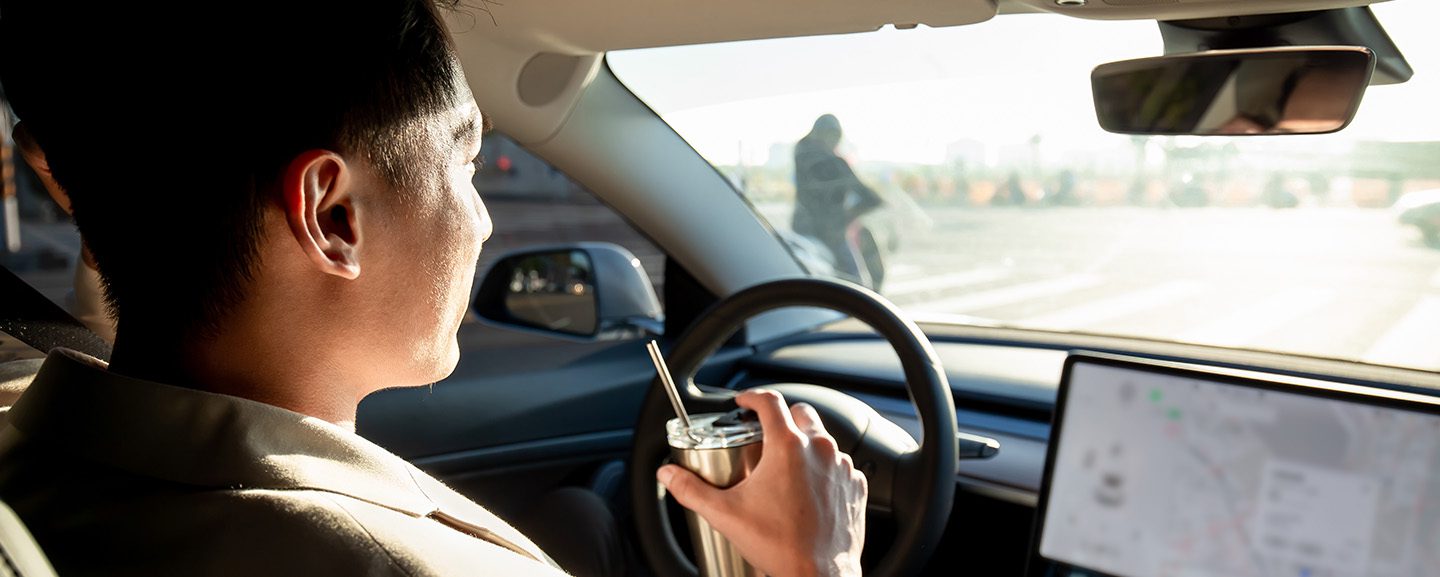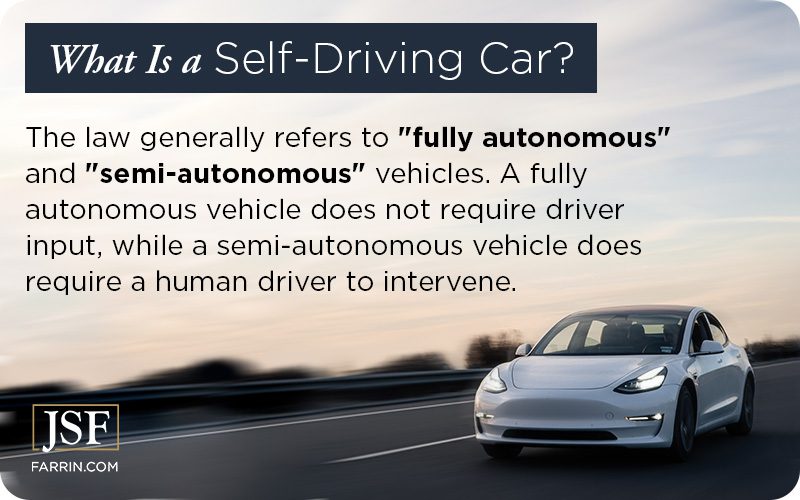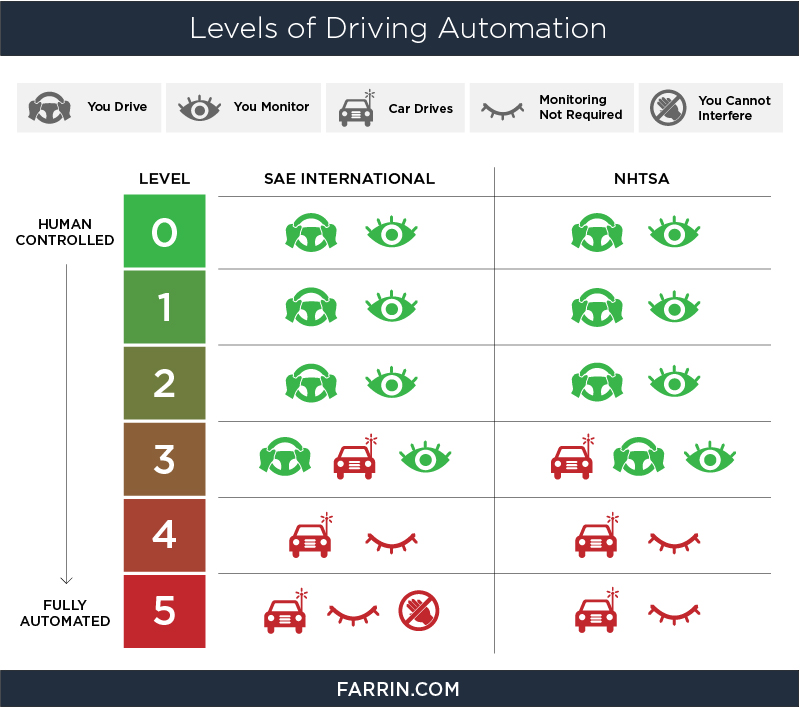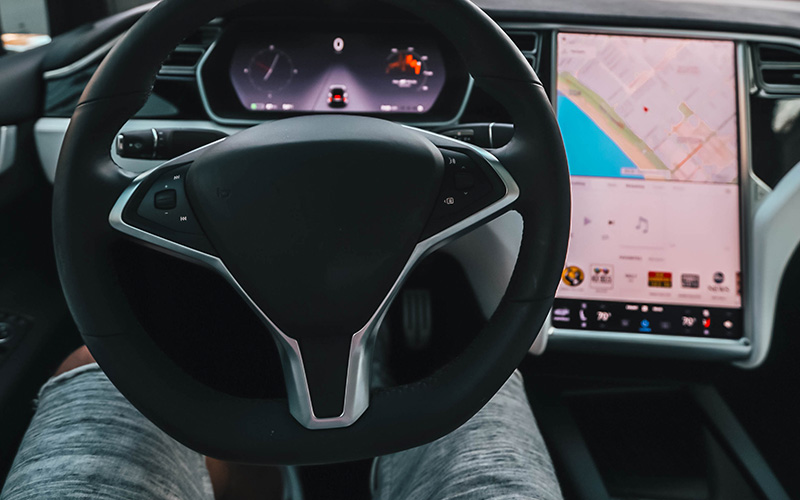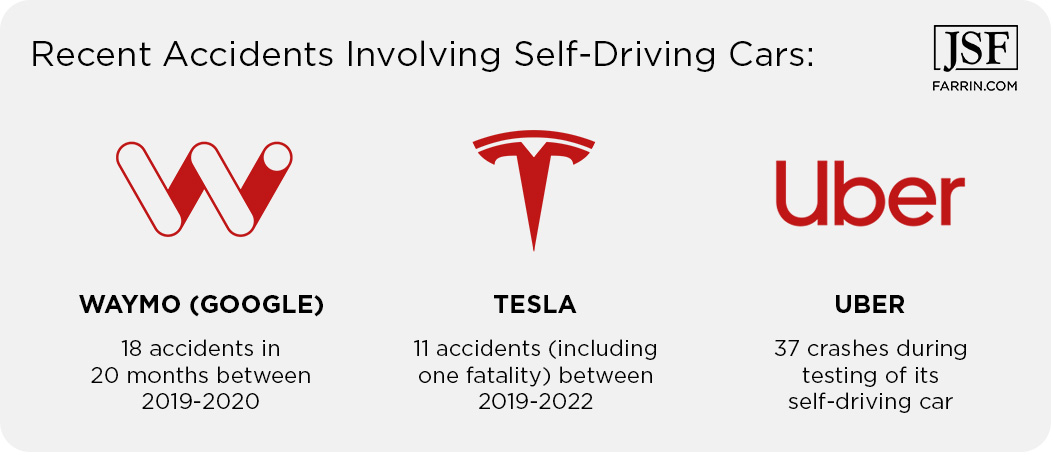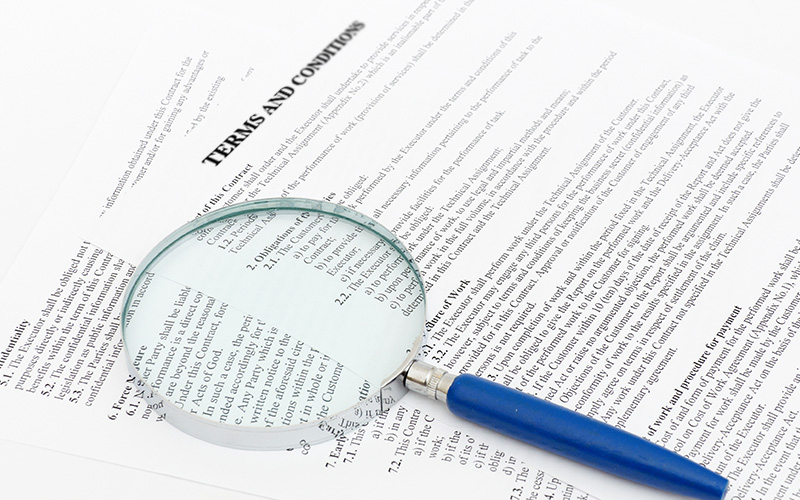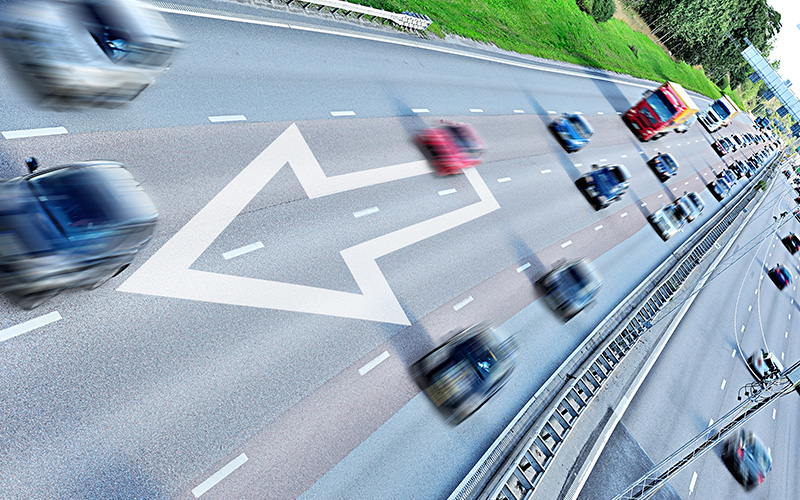As the owner and operator of a vehicle, you assume responsibility for that vehicle, regardless of who’s driving. The law is very clear in this area – if someone else is driving your car and causes an accident, your policy on the vehicle is the first one liable for the damage. Self-driving or not.
But technology is outpacing the law in many respects, and advancements in capabilities are arriving much faster than the laws to govern them. For now, while your Tesla has “Autopilot” mode or your Cadillac has “Super Cruise,” you still have the responsibility to ensure your car is under control, and you’re liable for an accident the system causes.
But what happens when we have fully autonomous cars?
What laws at the federal and state level are involved, and are they changing? Buckle up for a quick primer on self-driving cars, liability, and the law!
What Exactly Is a Self-Driving Car?
There are plenty of words – and marketing – around self-driving cars. The law generally refers to “fully autonomous” and “semi-autonomous” vehicles. A fully autonomous vehicle does not require driver input, while a semi-autonomous vehicle does require a human driver to intervene. The term “self-driving” car refers, generally, to a vehicle that requires no human control and therefore could be literally “driverless.”
Furthermore, there are many different levels of automation, which vary depending on whom you ask.
The National Highway Traffic and Safety Administration (NHTSA) classifies automation by the level of intervention the car or automated driving system (ADS) can exercise, from 0-5. Separately, the Society of Automotive Engineers (SAE) also rates “levels of driving automation” on a 0-5 scale.
Legal definitions may also depend on which state you’re in. North Carolina law, passed back in 2017, defines a fully autonomous vehicle as: “a motor vehicle equipped with hardware and software that are collectively capable of performing the entire dynamic driving task on a sustained basis…and that will not at any time require an occupant to perform any portion of the dynamic driving task when the automated driving system is engaged.”
Are There Self-Driving Cars on the Road Today?
While there are no true autonomous vehicles on sale today, there are plenty of vehicles with “semi-autonomous” features and self-driving capabilities on sale and a few “fully autonomous” vehicles in the testing phase – with a human operator aboard – on the road as well. Depending on where you live, you may be driving next to a fully autonomous test car.
Sooner than later, you will share the road with many driverless cars – fully autonomous vehicles. According to data compiled by Statistia, self-driving cars are predicted to have a $36 billion global market by 2025, and the U.S. will form nearly 30% of it. Other estimates are much greater, putting the value of the global market in 2020 at more than $70 billion and predicting explosive growth to more than $2 trillion by 2030.
Self-Driving Car Accidents – The Future Is Now
Sadly, the “self-driving car accident” is already a thing – though it is inaccurate to use the term “self-driving” in this case. What if I told you that semi-autonomous vehicles and autonomous test vehicles are involved in about twice as many accidents per million miles as human-driven vehicles? There are an average of 9.1 of these mistakenly labeled “self-driving car accidents” per million miles driven, compared to 4.1 for human-driven cars.
However, the severity of the average car accident involving these vehicles is lower. The most common “self-driving car” accident? A rear-end collision (with sideswipes being second).
So, car companies like Tesla and tech companies like Google are already testing features that provide varying levels of autonomy that will eventually lead to truly self-driving cars. There are a few parts of the country where a vehicle manufacturer can test a full/semi-autonomous self-driving vehicle on public roads. North Carolina law accounts for these vehicles. Other states, like South Carolina, have no specific law governing their use.
Still, accidents involving semi-autonomous self-driving cars are happening.
- Waymo – Google’s self-driving car – was involved in 18 accidents over a 20-month period from 2019-2020, most of which involved pedestrians, cyclists, drivers, or other objects. This does not include 29 incidents where a human driver had to take control of the vehicle to avoid an accident.
- From 2019-2022, Tesla vehicles in “self-driving” mode – called Autopilot – were involved in 11 accidents causing 17 injuries and one death. In the six-year period from 2016-2022, three Tesla drivers were killed in accidents involving the system.
- Uber, which is also testing a self-driving car, has had its test vehicles crash 37 times.
Determining Liability in a Self-Driving Car Accident
Current law places the responsibility for a car accident on the driver at fault, and the liability generally begins with the owner of the at-fault vehicle – not necessarily the driver. So what if there’s no driver? History seems to indicate that the owner of a driverless vehicle deemed at fault for an accident will be held liable.
Manufacturers – through the use of end-user licensing agreements and other legal documents – try to shield themselves from fault unless there is some sort of defect present. Owners of Tesla vehicles, for example, would do well to read all of the documentation that comes with their automobiles in regard to manufacturer liability.
Self-driving capabilities carry the following disclaimer:
Active Supervision; Responsibility. Full Self-Driving capability features require active driver supervision and do not make the vehicle autonomous. You’re responsible for any and all speeding, tolls, parking, and other traffic violations even when the features are in use. It’s your responsibility to make sure that you only use Full Self-Driving capability features when it’s safe and legal to do so.
Other manufacturers are certain to have similar policies in place to shield themselves from liability wherever possible. Also, notice that Tesla uses “self-driving” to describe the feature. The cars do already have “auto park” and “summon” features, which enable the car to park itself and then navigate the parking lot to pick the driver up! Still, even with the system engaged, the car isn’t technically self-driving or fully autonomous.
Self-Driving Car Accident Liability – Comparative vs. Contributory Negligence
There are two primary ways states approach fault in car accidents. Comparative negligence states like South Carolina weigh each driver’s negligence and can assign a percentage of fault to each, accordingly. In a contributory negligence state, such as North Carolina, if you are even 1% at fault for a crash, you may not be entitled to any compensation.
Current Cases, the Future, and Where to Find Your State’s Laws
At the time of this writing, a California Tesla owner has been charged with manslaughter due to a fatal accident involving his use of the self-driving feature of his Tesla. The case includes a civil suit against both the driver and Tesla from the victim’s family. The result of both the civil and criminal cases could become a benchmark for self-driving crashes, or it could spur the creation of new laws. People are already thinking and writing about it.
Meanwhile, Tesla famously claimed it would produce vehicles without steering wheels by 2021. While that has not yet materialized, there are already some structures in place to support fully autonomous driving. Though it does not yet specifically regulate them, NHTSA has edited rules for driverless vehicles not meant for passenger use – delivery vehicles, in other words – to enable manufacturers to produce them without driver controls.
With the federal government currently leaving regulation generally to the states, the answer to the question of liability in a self-driving car accident is, “It depends.” North Carolina’s law does require a fully autonomous vehicle’s owner to have an automotive liability insurance policy, but says nothing of fault determination.
You can track state laws regarding self-driving vehicles via the National Conference of State Legislatures’ tracking database.
Call a Lawyer if You’re Injured by Another in an Accident – No Matter Who’s Driving
Driverless cars are not necessarily going to be faultless – but that’s mostly a concern for the future. For now, call an attorney if you’re injured in an accident with any type of semi-autonomous vehicle or a car using autonomous features.
The onboard computers should know what features were engaged and likely whether or not the driver was paying attention. Still, some insurance companies and insurance adjusters may not handle accident claims from self-driving vehicles uniformly or fairly. They’re not working for you – but a lawyer is your advocate.
We’ve helped more than 73,000 people recover more than $2 billion in gross compensation since 1997. Some of our many happy clients had their claims denied entirely before they hired us.1 Call us today at 1-866-900-7078 or contact us online for a free case evaluation by an attorney.


